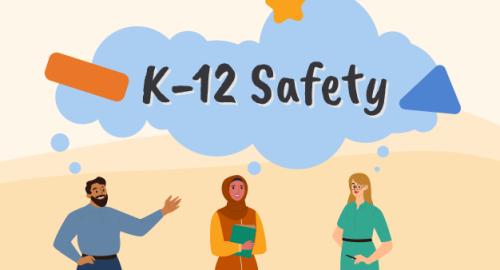Listen to this blog (4 mins)
School emergency management is an active exercise that gets refined as research is conducted, lessons are learned, and most importantly, experiences are shared with others.
Raptor recently led a panel discussion with K-12 school safety experts, Michelle Gay (Co-Founder and Executive Director, Safe and Sound Schools), Paul Timm, PSP (Vice President, Facility Engineering Associates), and Mark Williams (Board Chair, Partner Alliance for Safer Schools).
In part 1 of the conversation, these experts shared best practices and emerging trends in prevention, protection, and mitigation. A summary of the conversation is below. You can listen to the full webinar here.
How to Keep Up with Emerging Trends in School Safety
School safety plans are living documents that must adapt as new information, best practices, and school safety concerns appear. “It’s a little bit of a balancing act between having things out there that are sort of covert or obvious,” Mark begins, “And making kids feel safe by having safety and security plans in place, doing training, and working with the kids to help them understand what we are doing…to help make them safer.”
The pandemic has influenced a new direction in school safety. “It’s been really interesting to see how the challenges of this pandemic have brought everybody out of their silos, so to speak,” Michelle says. More collaboration is one major silver lining. “We have nurses, security people, and mental health people who have had to sit at the table together because of the pandemic,” Paul explains. “Their voices have [now] been valued maybe in a way that they weren’t in the past.”
The pandemic also showed how important it is for schools to listen to students and guardians. “We’ve seen what happens in schools where the parents and students have felt disenfranchised or have felt disconnected, and we don’t want that,” Michelle explains.
How to Support Student and Staff Mental Health
“We often talk about children and students as being very resilient,” Michelle begins. The anxiety and trauma they’ve experienced throughout the pandemic, though, has to go somewhere. “We’re seeing it full force [coming out in] misbehavior, violence, [and] fighting.”
Supporting students and staff is going to take time, and it’s likely going to require that schools place learning on the backburner and “put mental health, wellness, and social-emotional skills up on the very front burner,” Michelle says. “Unless we can bolster our students, staff, and communities in those areas, we are going to continue to see disruptions [and] violence.”
How to Build a Comprehensive School Safety Plan
School safety means different things to different people. “We all come at school safety from our different perspectives and our different professions,” Michelle explains. “Everybody has a different lens on what’s most important and that’s okay… [Safe and Sound Schools] created this framework to really help people bring it all together…to really make sure that [they] are covering all key areas.”

Schools can create comprehensive school safety plans when they consider these six key areas of school safety. Image created by Safe and Sound Schools.
The six areas include:
- Mental & Behavioral Health
- Health & Wellness
- Physical Environment:
- Culture, Climate & Community
- School Law, Policy & Finance
- Operations & Emergency Management
Each of these areas are connected so when you work on one, you make an impact on all. “These are the six that we invite people to really kind of focus on, imprint in their mind, and keep as a sort of roadmap for all the work that we do,” Michelle says.
Learn best practices for each area by listening to the full conversation here. You can listen to Part 2 of the conversation, which is focused on emergency response, recovery, and reunification, by clicking here.
To learn more about Raptor, contact us today to schedule a personalized demo.





